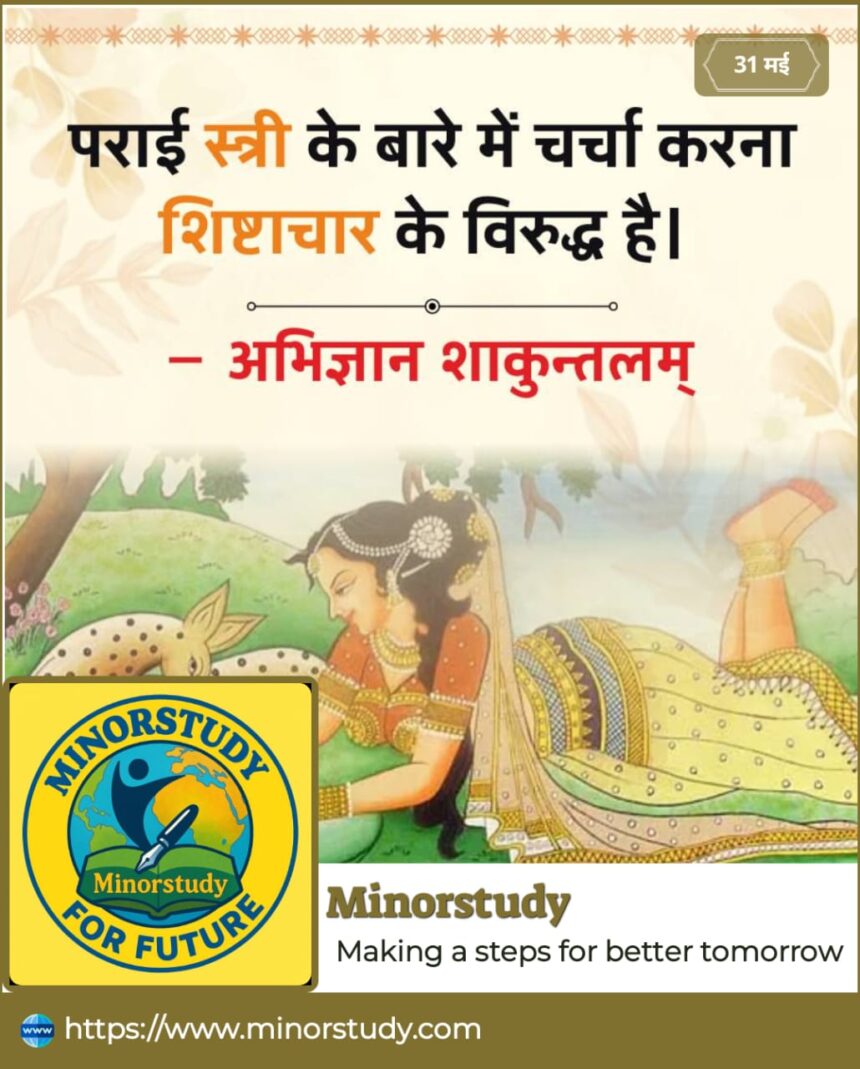Introduction: Who Is Shakuntala?
Shakuntala is one of the most enchanting and beloved heroines in Indian literature and mythology. Known primarily through the classical Sanskrit play “Abhijnanashakuntalam” by the great poet Kalidasa, Shakuntala’s story weaves themes of love, loss, destiny, and redemption. Rooted in the ancient epic Mahabharata, her character symbolizes innocence, grace, and resilience, continuing to inspire hearts across generations.
🕰️ Timeline and Historical Background
| Period | Events & Milestones |
|---|---|
| Ancient Era (c. 300 BCE – 400 CE) | The story of Shakuntala is described in the Mahabharata. |
| 4th-5th Century CE | Kalidasa’s “Abhijnanashakuntalam” popularizes her story in poetic drama form. |
| Medieval Period | Various regional adaptations in art, literature, and dance. |
| Modern Era | Shakuntala’s tale continues to be retold in literature, theater, and films. |
📜 History of Shakuntala
Shakuntala was born to the sage Vishwamitra and the celestial nymph Menaka. Raised by the sage Kanva in a hermitage, she was a symbol of natural beauty and spiritual purity. Her story is a poignant romance with King Dushyanta, who unknowingly forgets her due to a curse and later reunites with her after recalling their love.
Kalidasa’s poetic retelling enriched her tale, highlighting emotions of love, separation, and reunion. The story’s universal appeal lies in its exploration of human emotions and the power of destiny.
🔍 Fascinating Facts About Shakuntala
Shakuntala’s story is originally from the Mahabharata, an ancient Indian epic.
Kalidasa’s play “Abhijnanashakuntalam” is one of the most celebrated works of classical Sanskrit literature.
The name “Shakuntala” means “one who is raised by birds” — referring to her childhood in the forest.
She symbolizes the ideal woman in Indian culture: graceful, devoted, and resilient.
Shakuntala’s story has inspired countless paintings, poems, operas, and films globally.
The tale deals with themes of love, fate, memory loss, and reunion.
The story has a moral about trust, patience, and forgiveness.
🙋 Frequently Asked Questions (FAQs)
Q1. Who are Shakuntala’s parents?
Her parents are sage Vishwamitra and celestial nymph Menaka.
Q2. What is “Abhijnanashakuntalam”?
It is a classical Sanskrit play by Kalidasa that tells the story of Shakuntala and King Dushyanta.
Q3. Why did King Dushyanta forget Shakuntala?
He was cursed by a sage, causing him to forget her until a magical ring helped him remember.
Q4. Is Shakuntala’s story based on true events?
It is a mythological tale from Indian epics and classical literature, blending history and folklore.
Q5. What lessons can we learn from Shakuntala’s story?
Patience, faith in destiny, love’s endurance, and forgiveness.
🎯 Significance of Shakuntala in Culture and Society
Symbol of ideal womanhood: Shakuntala embodies virtues like purity, patience, and loyalty.
Cultural icon: Her story reflects Indian values of love and destiny.
Literary treasure: The play “Abhijnanashakuntalam” remains a masterpiece influencing classical and modern arts.
Spiritual significance: She represents harmony between nature, humanity, and the divine.
Moral guidance: Her life teaches resilience through hardships and the power of faith.
🎉 Observance & Wishing
Shakuntala’s tale is often recited and celebrated in literary festivals, classical dance performances, and theater across India and beyond.
Wishing example:
“May Shakuntala’s grace and strength inspire your journey through life’s joys and challenges.”
💡 Important Points & Human Behavior Reflections
Shakuntala’s story reflects human experiences and behavior in many ways:
Love and separation: Shows the pain and hope in relationships.
Trust and forgiveness: Highlights the importance of forgiving mistakes.
Patience and destiny: Demonstrates faith in time and fate.
Resilience: Teaches strength amidst hardship and social rejection.
Harmony with nature: Symbolizes living peacefully with the environment and spiritual realms.
Her narrative resonates deeply because it portrays raw human emotions with compassion and elegance.
🧭 Importance in Daily Life and Society
Shakuntala’s story impacts daily life and society by:
Inspiring faith in love and destiny, encouraging people not to lose hope.
Promoting forgiveness and understanding in strained relationships.
Providing a model for strength and patience during adversity.
Enriching Indian cultural heritage through arts and literature.
Encouraging spiritual reflection and connection with nature.
❤️ Positive and Negative Reflections on Shakuntala’s Legacy
Positive:
A timeless symbol of grace, love, and resilience.
Influential in shaping Indian classical arts and literature.
Encourages hope and faith even in difficult times.
Offers moral lessons relevant for all ages.
Negative:
Some view the story as overly idealistic and not reflective of modern gender equality.
The idea of fate and destiny may be seen as discouraging proactive change by some.
Certain interpretations can be criticized for glorifying patience in suffering, which may conflict with modern views on assertiveness.
🌍 Conclusion: Shakuntala’s Enduring Legacy of Love and Strength
Shakuntala’s story continues to captivate hearts because it speaks to the universal human experience — the joys and sorrows of love, the mystery of fate, and the triumph of resilience. Her life teaches us the importance of patience, trust, and forgiveness in our relationships and encourages us to find harmony between human emotions and the natural world.
In today’s fast-paced and complex world, Shakuntala’s timeless virtues inspire us to embrace grace under pressure and to believe in the power of love and destiny. Her tale is not just a legend but a living guide for nurturing compassion and strength in daily life.









